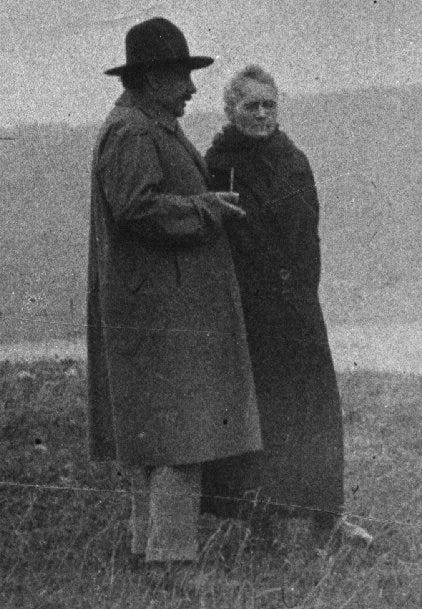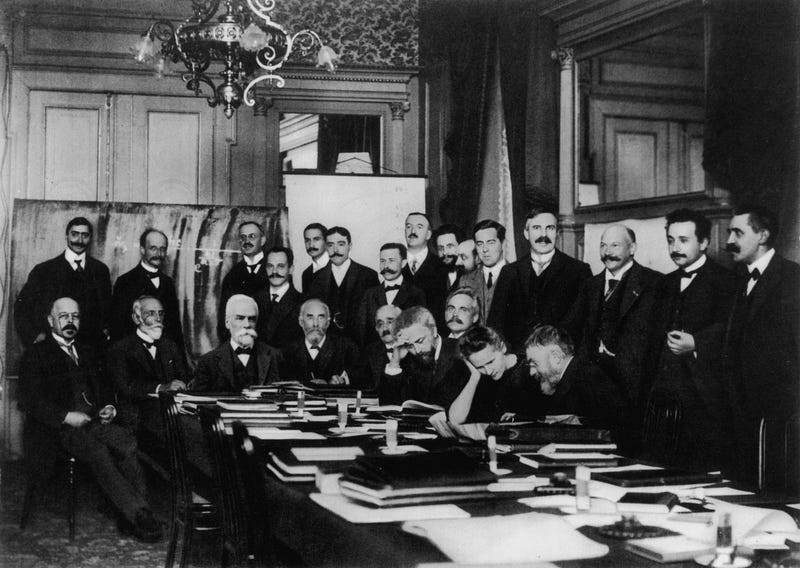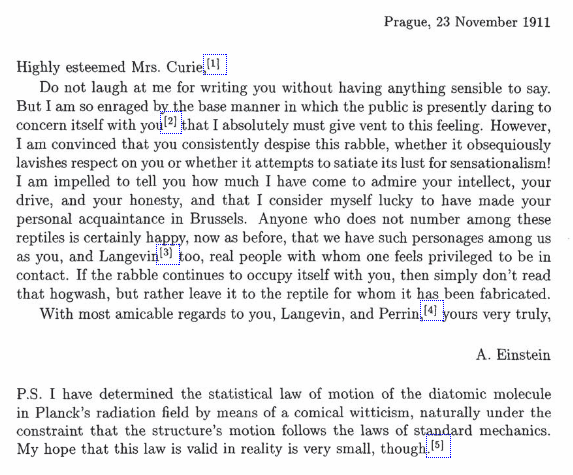The Remarkable Connection Between Einstein and Marie Curie
Written on
Chapter 1: A Meeting of Extraordinary Minds
In the history of science, one photograph captures an extraordinary moment. Taken in 1927 at the fifth Solvay Conference in Brussels, it features two of the greatest intellectuals of the time: Albert Einstein and Marie Curie. Both radiated a profound intellect paired with a humble understanding of the universe's vastness. Einstein, the influential German physicist, was renowned for his revolutionary theory of relativity, which transformed our comprehension of time, space, and gravity. Curie, a trailblazer in the field of radioactivity, not only became the first woman to earn a Nobel Prize but remains the only individual to achieve this honor in two distinct scientific fields—physics and chemistry.
Their paths frequently intersected at various scientific gatherings, including the esteemed Solvay Conferences. Einstein, known for his friendly and somewhat eccentric demeanor, held a deep admiration for Curie’s determination and scientific insight. In a tribute for Curie’s memorial in 1935, Einstein reflected on her legacy in his book Out of My Later Years, stating:
“The greatest scientific deed of her life proving the existence of radioactive elements and isolating them—owes its accomplishment not merely to bold intuition but to a devotion and tenacity in execution under the most extreme hardships imaginable, such as the history of experimental science has not often witnessed…”
Curie, typically reserved and focused on her work, found a steadfast friend in Einstein. Their bond was anchored in mutual respect and a shared curiosity about the world, further solidified by their experiences in the public eye, where their private lives were often scrutinized.


[Left] A. Einstein conversing with M. Curie, 1929, Public Domain Image. [Right] The first Solvay Conference, captured by Benjamin Couprie, 1911.
Chapter 2: A Letter of Encouragement
Their friendship is beautifully illustrated by a significant letter written in 1911. During a time of great upheaval in both science and society, Einstein reached out to Curie, who was navigating severe public scrutiny due to her personal life, particularly her relationship with married physicist Paul Langevin. Amid her groundbreaking work in radioactivity, Curie faced ridicule not only as a scientist but also as a woman in a male-dominated field.
Einstein, a strong advocate for individual freedom, found the public's treatment of Curie both unjust and disheartening. In his letter, he encouraged her to dismiss the harsh words of the press, comparing their criticisms to barking dogs that should not warrant her attention.

This correspondence transcended mere words; it symbolized solidarity, resilience, and the relentless pursuit of scientific truth. Einstein's support was a beacon for Curie during a tumultuous time, reflecting the deep respect they held for one another's intellect and character.
The interactions between Einstein and Curie reveal the profound impact of collaborative thought across scientific disciplines. They demonstrated that science thrives on partnership and mutual admiration, regardless of gender, nationality, or specific field of study. In an era marked by rapid scientific evolution, their legacy serves as an inspiration, reminding us of the importance of empathy and support among peers.
Explore the encounter between Einstein and Curie in this video detailing their historic meeting.
Discover the contents of Einstein's letter to Curie and its significance in this insightful video.
Thank you for reading! If you enjoyed this narrative, please show your support by clapping as often as you like. To further support my work, consider becoming a Medium member or buying me a coffee. Stay tuned for more stories!